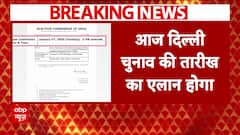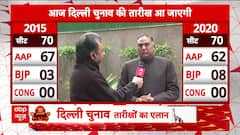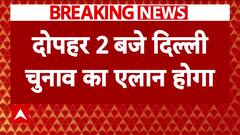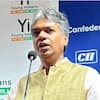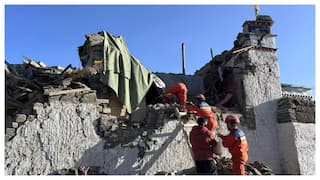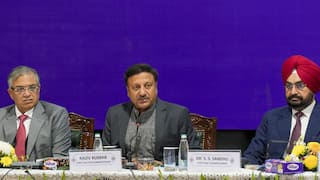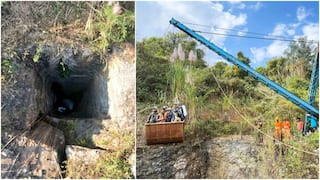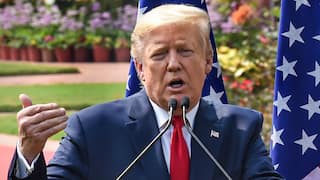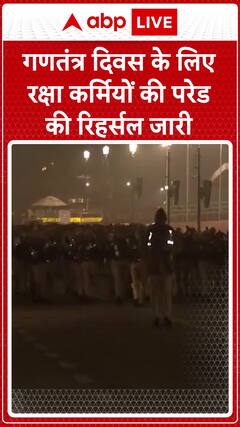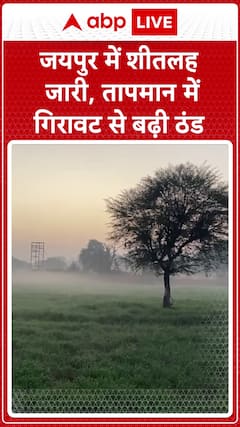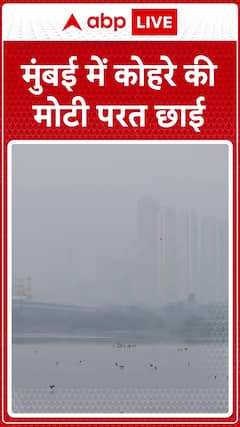Explorer
Advertisement
The Lonely Battle of the Indian Farmer
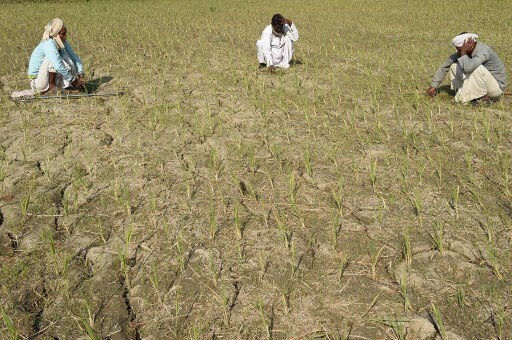
AFP IMAGE
Thirty-five thousand farmers, from across the nation, marched in Delhi this past weekend to highlight their long-standing grievances and to move a largely indifferent country into giving some thought to the fact that Indian agriculture is in a state of acute and precipitous decline. To say that the farmers also acted to stir the conscience of the present government would be true but for the circumstance that there is little to suggest that the vast majority of those who run the country have any conscience at all. Even the word “crisis” is inadequate to describe the depth of the problems which have severely diminished the dignity of the farmers’ lifestyle and reduced many of them to unfathomable despair, which is captured by the fact that, according to the National Crime Records Bureau (NCRB), 300,000 farmers committed suicide between 1995-2015. The NCRB has thus far not released final figures for 2016 and 2017, and even the data that it released for 2014 and 2015 suggests that some of it was doubtless manipulated. Who will believe, for instance, that there were no farmers’ suicides in 12 states in 2014? The brute fact of the matter is that conditions for Indian farmers have not improved an iota in recent years. The problems did not begin with the present government, but they have doubtless become much worse.
I remember a visit with Sunderlal Bahuguna, the renowned Chipko activist, at his ashram near Ghansali in the Tehri-Garhwal region three decades ago. He told me then, “Bharat ki atma desh ke lakhon gaon me hain” (“India’s soul resides in its countless villages”). Some might construe this as a romantic account of the torpid Indian village, but village life revolved around agricultural seasons and agriculture was the main source of livelihood. The classics of Hindi cinema, from Do Bigha Zamin (1953) and Mother India (1957) to Upkaar (1967) spoke to this sensibility. Even with the extraordinary growth of Indian cities over the last several decades, it is only with the last census in 2011 that urban India for the first time added more people than rural India. The recent report, “State of Indian Farmers”, by the nationally reputed Centre for the Study of Developing Societies (CSDS), based on a survey of over 5000 farming households across 274 villages in 137 districts, confirms that 76% of farmers would rather do some other work, and 61% of the farmers said they would rather be employed in the city.
If farmers are abandoning their ancestral profession by the droves, or would like to give it up for good, they are doing so for sound reasons. The problems are too numerous, but some may be enumerated briefly. Many farmers—62% of the interviewed farmers in the CSDS study—are not even aware of the Minimum Support Price (MSP), and those who are agree that this price is woefully inadequate. Water shortages have critically impacted Indian agriculture and the evidence is overwhelming that such shortages will become more acute in the near future. Climate change has aggravated the misery, and farmers everywhere complain of damage to crops owing to unseasonal rains, floods, and droughts. Rural indebtedness is a grave calamity, accounting for a huge number of suicides, and the scourge of the moneylender remains. Indian farming cannot be understood without an appreciation of the fact that large farmers, each owning ten acres or more of land, account for only 7% of all farmers; 60% are small owners, in possession of 1-3 acres, and another 14% are landless. The remaining, 19%, are farmers who own 4-7 acres of land. The credit crisis afflicts mainly the small and poor farmers, since the huge majority of those who have benefited from government schemes and subsidies are large farmers. The intensification and corporatization of agriculture under capitalism, though it does not account for every ill, has certainly played a huge part in the impoverishment of the small farmer.
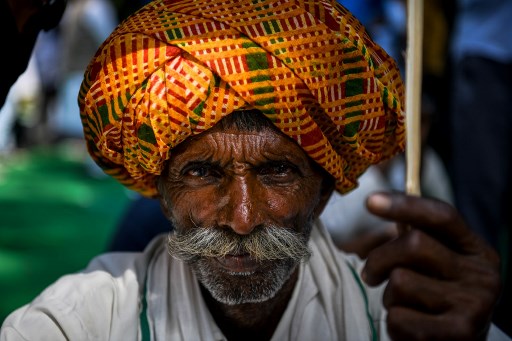 The present agitation is shaped both by short-term demands and long-term grievances. The Farmers’ Freedom from Indebtedness Bill (2018) and the Farmers’ Right to Guaranteed Remunerative Minimum Support Prices for Agricultural Commodities Bill (2018) have been languishing in Parliament. Though loan waivers and an increase in the MSP are critically important, it must be understood that these are of little if any interest to landless laborers; among them, there are other problems, such as the fact that in most states, women are paid only half of what men earn for the same amount of labor and as little as Rs 100-150 a day. The farmers and their supporters are demanding the implementation of the recommendations of the commission headed by the eminent agricultural scientist M S Swaminathan which issued five reports between December 2004 and October 2006, and insisting that Parliament devote 21 days to a discussion of the plight of farmers and the perils to Indian agriculture.
Volume Two of the Fifth and Final Report of the Swaminathan Commission commences with two epigrams, one from Gandhi—“To those who are hungry, God is bread”—and the other from Nehru: “Everything else can wait, but not agriculture.” The majority of Indian farmers and members of their households have only two meals a day, and at least 10% have only one meal a day. That those whose labour helps put the food on the tables in the country’s towns and cities should not have enough food for themselves is particularly odious and cruelly ironic. The indisputable fact is that a third of the world’s malnourished children live in India, just as it is clear that the problem is not one of scarcity but rather of accessibility to food.
However, this is not just another “crisis” and what is at stake is more than even the dire state of the Indian farmer and agriculture. Though I advert to the “lonely battle” being waged by farmers, it is heartening that the march organized by the Kisan Sabha earlier this year which saw 40,000 Maharashtrian farmers walking over 200 kilometres before making their entry into Mumbai earned them the goodwill of the city and the support of students, academics, urban workers, and many others. Nevertheless, the work of reigniting the links between the rural and the urban has barely begun, and urban India has to recognize that it has brutally eviscerated the village and excised the farmer from its imagination. What we banish in this fashion will come back to haunt us. India cannot be made whole until and unless it confers on farmers the centrality that they, the toilers of the soil and the sustainers of the nation, deserve.
(Vinay Lal is a writer, blogger, cultural critic, and Professor of History at UCLA.)
Disclaimer: The opinions, beliefs and views expressed by the various authors and forum participants on this website are personal and do not reflect the opinions, beliefs and views of ABP News Network Pvt Ltd.
The present agitation is shaped both by short-term demands and long-term grievances. The Farmers’ Freedom from Indebtedness Bill (2018) and the Farmers’ Right to Guaranteed Remunerative Minimum Support Prices for Agricultural Commodities Bill (2018) have been languishing in Parliament. Though loan waivers and an increase in the MSP are critically important, it must be understood that these are of little if any interest to landless laborers; among them, there are other problems, such as the fact that in most states, women are paid only half of what men earn for the same amount of labor and as little as Rs 100-150 a day. The farmers and their supporters are demanding the implementation of the recommendations of the commission headed by the eminent agricultural scientist M S Swaminathan which issued five reports between December 2004 and October 2006, and insisting that Parliament devote 21 days to a discussion of the plight of farmers and the perils to Indian agriculture.
Volume Two of the Fifth and Final Report of the Swaminathan Commission commences with two epigrams, one from Gandhi—“To those who are hungry, God is bread”—and the other from Nehru: “Everything else can wait, but not agriculture.” The majority of Indian farmers and members of their households have only two meals a day, and at least 10% have only one meal a day. That those whose labour helps put the food on the tables in the country’s towns and cities should not have enough food for themselves is particularly odious and cruelly ironic. The indisputable fact is that a third of the world’s malnourished children live in India, just as it is clear that the problem is not one of scarcity but rather of accessibility to food.
However, this is not just another “crisis” and what is at stake is more than even the dire state of the Indian farmer and agriculture. Though I advert to the “lonely battle” being waged by farmers, it is heartening that the march organized by the Kisan Sabha earlier this year which saw 40,000 Maharashtrian farmers walking over 200 kilometres before making their entry into Mumbai earned them the goodwill of the city and the support of students, academics, urban workers, and many others. Nevertheless, the work of reigniting the links between the rural and the urban has barely begun, and urban India has to recognize that it has brutally eviscerated the village and excised the farmer from its imagination. What we banish in this fashion will come back to haunt us. India cannot be made whole until and unless it confers on farmers the centrality that they, the toilers of the soil and the sustainers of the nation, deserve.
(Vinay Lal is a writer, blogger, cultural critic, and Professor of History at UCLA.)
Disclaimer: The opinions, beliefs and views expressed by the various authors and forum participants on this website are personal and do not reflect the opinions, beliefs and views of ABP News Network Pvt Ltd.
 The present agitation is shaped both by short-term demands and long-term grievances. The Farmers’ Freedom from Indebtedness Bill (2018) and the Farmers’ Right to Guaranteed Remunerative Minimum Support Prices for Agricultural Commodities Bill (2018) have been languishing in Parliament. Though loan waivers and an increase in the MSP are critically important, it must be understood that these are of little if any interest to landless laborers; among them, there are other problems, such as the fact that in most states, women are paid only half of what men earn for the same amount of labor and as little as Rs 100-150 a day. The farmers and their supporters are demanding the implementation of the recommendations of the commission headed by the eminent agricultural scientist M S Swaminathan which issued five reports between December 2004 and October 2006, and insisting that Parliament devote 21 days to a discussion of the plight of farmers and the perils to Indian agriculture.
Volume Two of the Fifth and Final Report of the Swaminathan Commission commences with two epigrams, one from Gandhi—“To those who are hungry, God is bread”—and the other from Nehru: “Everything else can wait, but not agriculture.” The majority of Indian farmers and members of their households have only two meals a day, and at least 10% have only one meal a day. That those whose labour helps put the food on the tables in the country’s towns and cities should not have enough food for themselves is particularly odious and cruelly ironic. The indisputable fact is that a third of the world’s malnourished children live in India, just as it is clear that the problem is not one of scarcity but rather of accessibility to food.
However, this is not just another “crisis” and what is at stake is more than even the dire state of the Indian farmer and agriculture. Though I advert to the “lonely battle” being waged by farmers, it is heartening that the march organized by the Kisan Sabha earlier this year which saw 40,000 Maharashtrian farmers walking over 200 kilometres before making their entry into Mumbai earned them the goodwill of the city and the support of students, academics, urban workers, and many others. Nevertheless, the work of reigniting the links between the rural and the urban has barely begun, and urban India has to recognize that it has brutally eviscerated the village and excised the farmer from its imagination. What we banish in this fashion will come back to haunt us. India cannot be made whole until and unless it confers on farmers the centrality that they, the toilers of the soil and the sustainers of the nation, deserve.
(Vinay Lal is a writer, blogger, cultural critic, and Professor of History at UCLA.)
Disclaimer: The opinions, beliefs and views expressed by the various authors and forum participants on this website are personal and do not reflect the opinions, beliefs and views of ABP News Network Pvt Ltd.
The present agitation is shaped both by short-term demands and long-term grievances. The Farmers’ Freedom from Indebtedness Bill (2018) and the Farmers’ Right to Guaranteed Remunerative Minimum Support Prices for Agricultural Commodities Bill (2018) have been languishing in Parliament. Though loan waivers and an increase in the MSP are critically important, it must be understood that these are of little if any interest to landless laborers; among them, there are other problems, such as the fact that in most states, women are paid only half of what men earn for the same amount of labor and as little as Rs 100-150 a day. The farmers and their supporters are demanding the implementation of the recommendations of the commission headed by the eminent agricultural scientist M S Swaminathan which issued five reports between December 2004 and October 2006, and insisting that Parliament devote 21 days to a discussion of the plight of farmers and the perils to Indian agriculture.
Volume Two of the Fifth and Final Report of the Swaminathan Commission commences with two epigrams, one from Gandhi—“To those who are hungry, God is bread”—and the other from Nehru: “Everything else can wait, but not agriculture.” The majority of Indian farmers and members of their households have only two meals a day, and at least 10% have only one meal a day. That those whose labour helps put the food on the tables in the country’s towns and cities should not have enough food for themselves is particularly odious and cruelly ironic. The indisputable fact is that a third of the world’s malnourished children live in India, just as it is clear that the problem is not one of scarcity but rather of accessibility to food.
However, this is not just another “crisis” and what is at stake is more than even the dire state of the Indian farmer and agriculture. Though I advert to the “lonely battle” being waged by farmers, it is heartening that the march organized by the Kisan Sabha earlier this year which saw 40,000 Maharashtrian farmers walking over 200 kilometres before making their entry into Mumbai earned them the goodwill of the city and the support of students, academics, urban workers, and many others. Nevertheless, the work of reigniting the links between the rural and the urban has barely begun, and urban India has to recognize that it has brutally eviscerated the village and excised the farmer from its imagination. What we banish in this fashion will come back to haunt us. India cannot be made whole until and unless it confers on farmers the centrality that they, the toilers of the soil and the sustainers of the nation, deserve.
(Vinay Lal is a writer, blogger, cultural critic, and Professor of History at UCLA.)
Disclaimer: The opinions, beliefs and views expressed by the various authors and forum participants on this website are personal and do not reflect the opinions, beliefs and views of ABP News Network Pvt Ltd.
Follow Blog News on ABP Live for more latest stories and trending topics. Watch breaking news and top headlines online on ABP News LIVE TV
View More
Blog
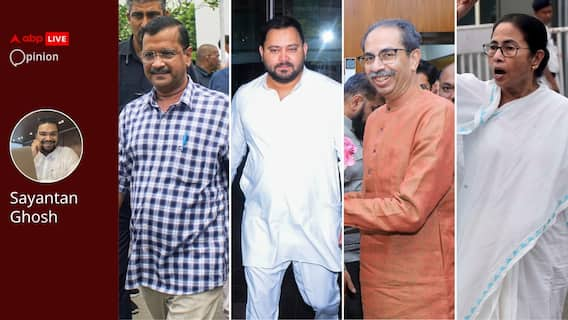 “ Opinion: Delhi Polls To BMC Election: How 2025 Will Shape Political Future Of I.N.D.I.A Bloc
“ Opinion: Delhi Polls To BMC Election: How 2025 Will Shape Political Future Of I.N.D.I.A Bloc

Sayantan Ghosh
Advertisement
Advertisement
Advertisement
Advertisement
Trending News









